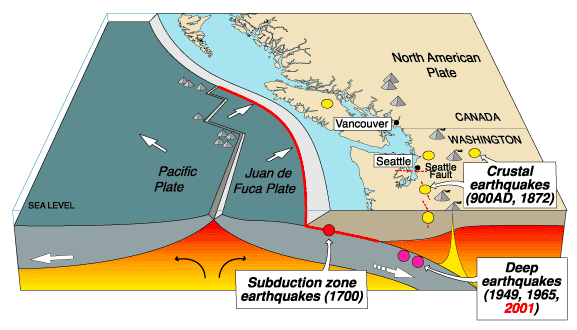Published on May 7, 2019

Scientists have found that the shaking likely to be generated by a massive earthquake on the Cascadia subduction zone is worse than previously thought—and Seattle’s current building codes aren’t equipped to handle it.
The study, which was presented at the 2019 Seismological Society of America Annual Meeting last month, is based on the work of Nasser Marafi, a Civil and Environmental Engineering PhD candidate and structural engineer at UW. Marafi is part of UW’s M9 Project (as in, “magnitude 9”), a team of researchers from physical sciences, mathematics, engineering, urban planning, and social sciences who are working together to try to figure out what is going to happen around here when the really big one hits. And the chances that it’s going to hit should have all of us in this region shaking in our boots: Experts from the U.S. Geological Survey say there is a 14 percent chance that a magnitude 9 quake will hit in the next 50 years.
Marafi told me in a phone interview that he used simulated 9.0 earthquakes by the USGS/UW to see how they would affect building structures located in “deep sedimentary basins” like the geological formations most Western Washington cities and towns are built on. During the last Ice Age, Marafi explained, layers of sediment were compacted between the Cascades and the Olympics. Now, that basin—basically all the land between the two mountain ranges—is home to lots and lots of people. And that’s a problem. “When seismic waves enter the basin, they amplify in intensity,” Marafi said. “And this effect isn’t considered in current building codes.”
Continue reading at The Stranger.
Originally written by Katie Herzog for The Stranger.